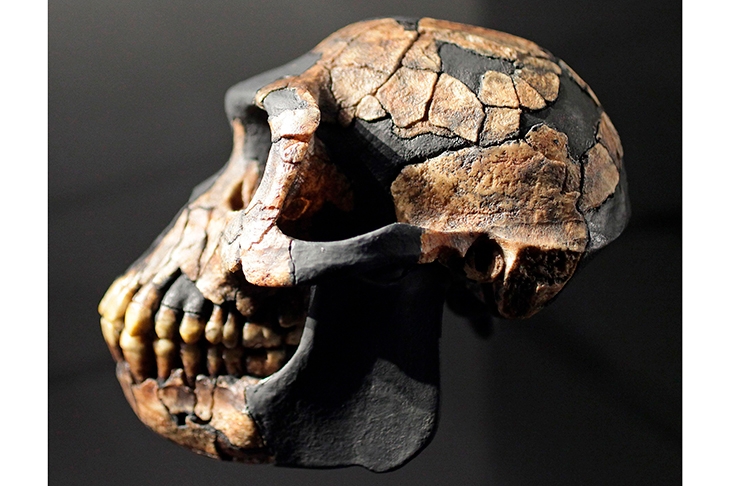To comprehend ourselves and the future of humankind we have to understand where we came from. Unlike the approximately 350,000 known species of beetles on Earth, there is just one existing species of human. It is hard to imagine how our bodies and minds might have been constructed along different design principles or generated even a fraction of such diversity. With our growing ability to manipulate human genomes using gene editing, and the emergence of technologies that may enable human genomes to be rewritten in their entirety, the question of what we might become is no longer theoretical. Should humankind decide to redesign itself, the crapshoot of design by Darwinian evolution may become as redundant as taxi drivers in an age of driverless cars.
We are one of four different types of ape. The techniques of molecular biology have demonstrated that we are more closely related to the African versions — chimps and gorillas — than to orangutans, and closer to chimps than gorillas. Together with molecular evidence indicating that we share a common ancestor with chimps and gorillas around six million years ago, biologists concluded that Homo sapiens is a recent arrival — descended from an as-yet-to-be discovered chimp-like ancestral relative. In this pervasive ‘chimp-centric’ view of evolution, modern humans are made-over naked chimps.
In Fossil Men, Kermit Pattison takes us on a dazzling journey into deep geological time to explore the distant roots of humankind and shows how this ‘out-of-chimps’ theory was up-ended. The narrative focuses on the unearthing of ‘the most important fossil that most people have never heard about’ — the skeleton of Ardipithecus ramidus, or ‘Ardi’ for short. It indicated how bizarre and unpredictable nature’s ‘blind’ rewriting of ancient pre-human genomes could be, and provided tantalising glimpses into human possibility.
The finding in Ethiopia in 1974 of ‘Lucy’ — a fragmented 3.2 million-year-old skeleton, at the time the most ancient human ever discovered — was a global sensation. It showed that ancient humans were bipedal and erect, had ape-like heads, brains one third the size of modern humans’ and lacked the ability to fashion tools. Initially touted as the potential ancestor of all modern humans, Lucy was eventually shown to be just an older example of an already familiar human-like anatomical theme. There had to be a precursor.
Ardi’s discovery in 1994 by a team of Ethiopians — including Berhane Asfaw, Giday Wolde Gabriel, Yonas Beyene — and the brilliant and enigmatic Tim White, a paleoanthropologist at the University of California at Berkeley, resulted in a shocking and unexpected reassessment of human origins. Like a character who would be at home at the bar in a Star Wars movie, Ardi’s 4.4 million-year-old skeleton revealed a jumble of paradoxical anatomical features that flew in the face of theories that pegged humankind to a chimpanzee-like ancestor. The skeleton was extracted from the arid ground using porcupine quills and dental tools and painstakingly reconstructed over a period of 12 years from delicate fragments. White kept it secret until he was ready to reveal the full scope of his findings.
Pattison combines his meticulously researched examination of the science of ancient humans with a visceral and penetrating tale of the intrigue, academic rivalry, pathological jealousy and intellectual inertia that has helped shape the evolution of scientific paradigms around human origins. He uses his first-hand experience of being on site in Ethiopia to detail the art, science, joys and challenges of fossil-hunting in a landscape as turbulent and unpredictable as the badlands of the Afar Depression in Ethiopia. His relationships with the key protagonists have enabled him to provide a compelling account of their characters, which turns out to be every bit as fascinating as the fossils they hanker after.
Perhaps the greatest surprise was Ardi’s juxtaposition of the primitive anatomical features of tree-living apes — including a grasping toe, big hands and curved digits — with multiple human-like features. These included a bump on the front of the hip bone, which indicated the presence of thigh musculature unique to bipeds. While lacking the forward-facing toe associated with walking upright, Ardi had a robust second toe, suggesting that she walked with an idiosyncratic gait. Notably absent were many of the anatomical features of chimps. Materials gathered from the same geological strata as Ardi indicated that she lived close to trees rather than the savannah’s grasslands.
The denouement of the story is unexpected and revelatory. While we continue to search for the last common ancestor of apes and humans, our genomic material has been inherited through many circuitous routes. So the notion that the roots of humanity issue from a single species of protohuman may be a straw man. There may not be a unitary Eden.






Comments